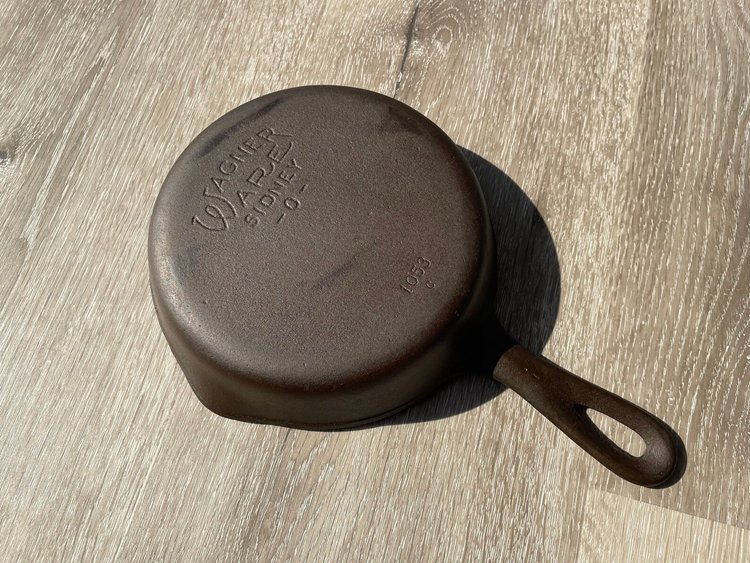
Are you looking to learn more about your iron cast iron skillet, or do you intend to get an antique cast iron skillet or want to know whether you are in possession of one?
If you answered yes to any of the above questions, then you have come to the right place where you can find all the necessary information regarding antique cast iron skillets, their identification, and value guide as well.
Table of Contents
An Introduction to Iron Skillets
Every individual has a unique taste in antique collecting and buying certain old stuff that suits their taste irrespective of what profession a person may belong to. But when it comes to antique cast iron skillets, it is much likely that chefs and kitchen experts are more interested in them.
Skillets are an essential element in kitchenware and are a daily use item. If you may wish to give your kitchen an antique classical ware, then an antique cast iron skillet is a must.
Antique cast iron skills have been in use since the 19th century and up till now. Some people use a cast iron skillet for their daily use.
It is because of the qualities and benefits it possesses that even with much advancement, people still look for antique cast iron skillets.
Kitchen tools are generally passed down to generation, and the cast iron skillet is no exception. It is very common to find a professional chef or a domestic kitchen worker to use such antique pieces of kitchenware to use in their daily life.
Therefore, it is essential and useful to know which one to buy and which one is not.
It is not that hard to find an antique cast iron skillet if you are well aware of its brand, logo, period, and other identification techniques.
So, to keep yourself refraining from frauds and swindlers, you need to have the basic knowledge of how to identify an original antique cast iron skillet.
Apart from its identification, if you anticipate buying an antique cast iron skillet, you must have ample knowledge regarding the worth these skillets possess today. This can be done by carefully examining its originality and then deciding its value.
Antique Cast Iron Skillet Identification Guide
You must know that there are thousands of copies and replicas of everything everywhere. As a collector of antiques, you must be well aware of the importance of identifying an original antique article.
Therefore, you can neither ignore nor deny the importance of learning how to identify an antique cast iron skillet identification. By learning the way of identifying the authentic antique cast iron skillet, it will be easier for you to hunt them at any auction.
The cast iron skillets’ necessity during the 19th century was due to their non-stick coating and durability. This essential kitchenware was cast from iron ore into such an iconic shape and solid piece.
By this, the makers were successful in creating long-last non-stick pans, skillets, bread pans, Dutch ovens, and many more.
Here are some of the ways that can help you in identifying an antique cast iron skillet
Look For The Manufacturers
Quality products always come up from renowned manufacturers. Back in time, many antique cast-iron skillet manufacturers were notable for their quality making. The skillets of these manufacturers were identified by some specific marking or a logo on the back of the pans they made.
Although we say that the manufacturers had some markings on the pans, there were also some of the pans without any engraving. This means that they may be a lot older than the marked ones.
The most famous antique cast iron skillets were the product of the Griswold Company. But there were other manufacturers as well whose skillet performance was equal and long-lasting in the kitchen.
Here is the list of some of the signature Iron Skillet manufacturers that you should look for while buying yourself antique cast iron skillets:
- Selden & Griswold(later known as Griswold only)
- Lodge Manufacturing Co.(still functional)
- Vollrath Manufacturing Co.
- Atlanta Stove Works
- Wagner Manufacturing Co.
- Wapak Hollow Ware Co.
- Favorite Stove and Range Co.
Condition And Quality Of Antique Cast Iron Skillets
The sole purpose of making antique cast iron skillets was to make them last longer than ordinary pans. Therefore, it might be difficult for you to trace their originality based on their looks alone.
This is why the traders’ marks and the signs of aging can be very fruitful in determining the antique iron cast skillet. As it is made up of the alloy of iron, there are some obvious tips to use while looking for their antiquity.
Rusting
A well-known fact is that iron rusts easily respond to the weather and climate effect. So, when you look for an antique iron cast skillet, seeing rusting on its surface is a must.
The time you start thinking about adding an old skillet to your kitchenware and giving your kitchen a more aesthetic look, the most vital of all is to look for the reddish/brown coloring on the surface of the skillets.
Both at the interior and base, so that you may become sure that it is an original item you are looking for.
Iron, with proper care, is subjected to rust and can even have some metal pit marks, which are caused by the coal fires’ acid erosion.
The marks or the logo of the markers may be hidden under the rusting, but there are several home and laboratory remedies to remove the rust. So you can try these; it will help you better in the process of identification of a vintage iron cast skillet.
Warping
Besides rusting, warping is another common feature of aging that affects the condition of the antique cast iron skillet. Waring usually occurs during the middle of the cooking when the pan is exposed to the irregular amount of heat at the base or the ingredients in it.
It may include animal fats that get settled to one side of the skillet and increase the heat in that particular area. Unluckily, this phenomenon makes it more difficult to utilize iron cast skillets on flat-top new stoves, but it is not entirely impossible.
So when you look for a vintage cast iron skillet, look for the uneven surface of the pan and test its horizontal level to guarantee that you are going to have the best quality antique kitchen.
Tips To Identify An Unmarked Iron Cast Skillet
The older an iron cast skillet, the more trustworthy its performance is. Cast iron skillets are capable of surviving for decades and, when taken care of even for centuries. They get enhanced with time with care and proper maintenance.
This is because when iron cast skillets are taken well care of, they develop an everlasting non-stick coating that gives incredible cooking results.
The reason why experts in the kitchen look for old iron cast skillets is that you have to start from scratch to maintain and season them. It will take years to grow its coating.
But when you buy an old skillet that is 2 or 3 decades old or even a century old, you can restore it to make it work.
But the question is that how will you know that the skillet is an old one when it does not have any trademark or a logo?
Of course, when unmarked pans have been there for years in storage and are not in use, then they will look abandoned and neglected. It will look covered with debris and mud, and rust. This is the main point that you need to keep in mind when there is no logo or marking on the skillet. It will make it easy for you to determine the antiquity of the pan.
Here are some of the tips that you can use when you are unaware of the manufacturer, and the skillet is without any logo
Initiate With The Brand
Usually, people find an unmarked pan in the junkyards of native homes or at the homes of their great-grandparents. So, it could be 6 or 7 decades or even a century old pan. So when you search for the brand names, their quality, and characteristics of iron and get other reviews, it will be easier for you to identify them when you come across a cast iron skillet.
Check For The Background
If you are persistent about where your skillet was manufactured, then look for any engraving on the pan. It is not possible that an old cast iron skillet is without any logo or a mark.
There must be some hint of the origin maker. It may be carved on, stamped, or sunken on the pan. American-based pan after 1960 had a stamp of clear letters, i.e., ‘Made in the USA.’ And before the 1960s, you didn’t need to specify where the pan was originally made.
There can also be some letters engraved on the pans as well. For example, G stood for griddle, SK was for the skillet, and DO for the Dutch oven. These letters are very common that you may find on antique Lodge cast iron items.
Besides this, look for the model numbers such as 10, 12, or 90. These numbers may indicate various other things, such as a cooker or a gas number. Or it might be a code representing a manufacturer or the diameter of the cast iron pan.
Inspect The Sides
One of the most distinguished and important features of an old iron skillet is its sides. This contains the angle and the depth. The depth of the frying pans is lighter than skillets. And the angle of the frying pans has a flared side, whereas that of sauté pans comprises straight sides.
The structure of the pans and the skillets is important to identify them. This is mainly because of the process of making it differs from the modern one. In previous times, the tools for making skillets were not advanced as they are today, so the inclines today are more defined.
You may not easily find two spouts in today’s pans and skillets, but in the past, the skillets had two spouts on the opposite sides.
Another feature from which you can identify old cast iron pans is that it is different in structure than the contemporary ones, such as non-stick coating and the helper handle, which is the feature of modern-day pans.
Have A Close Look At The Handle
Handles of the pans can be of great help when you are to identify them as modern or old. Modern-pan has an extra coating on the handle to prevent getting hurt from the hot iron handle. Whereas in the old pans, the handle was made of iron as well, which got heated when the pan was heated to cook.
Moreover, the handles today are made up of shiny stainless steel. On the contrary, the cast iron skillets had assimilated handles that were the part of the pan bowl having no rivets or screws.
The finishing of the cast iron skillets was smooth and charming, unlike modern-day cast iron pans, which may have silicon grips.
Getting more information and visual information, visit this video
How Do You Restore Your Cast Iron Skillet?
When you have found your desired antique cast iron skillet, then the next step that you must be worried about is how to restore the vintage cast iron skillet to make it in use.
You might be afraid that the cleaning of a rusted and coated iron skillet would be difficult to restore, but this is not the case. In reality, it is far easier to restore and clean an old pan like the new one.
Get a closer look at the pan to determine at what stage the rust is on the pan. Rust on the surface is light orange in color and dusty. This is the stage where the iron has just begun to damage, and it is easy to restore it at this stage.
If the rust has not reached the stage of being flaky and having a darker shade of reddish-brown, then it will be easy to make it clean. If the rust has not advanced to the point of pitting and eroding metal, the light rust can be removed in an instant, leaving the pan fairly intact in presence.
Here are some of the different procedures that you may use to restore your cast iron skillet.
Basic procedure includes
Vinegar Bath
Rust can also be removed using a solution of vinegar and water. Put one part of water and one part of white vinegar. Then soak the cast iron skillet in the solution for about half an hour in such a large container where the entire pan gets soaked easily.
After that, scrub the pan with steel wool or a stainless steel scrubbing pad and rinse it well. The initial stage rust would come out easily.
Aerosol Oven Cleaner
This is a very simple method to clean the old seasoning from the cast iron skillet, which means to layer it with an oven cleaner spray.
To prevent the spray from drying and evaporating up, wrap the cast iron skillet in a piece of a plastic bag and then keep it in a warm place. It may take several days for the aerosol cleaner to show its magic, but it’s worth it.
Check it back after several days; when the curd is softened, rinse it thoroughly, and the rust will go off.
Electrolysis
Among the various other restoration tools existing today for old cast iron items, the most reliable is electrolysis. If you are a chemist or have been a science student, you might have heard of this term in your school.
It is a bit more expensive process than the others, and slightly more effort is required in doing this, but the result is astonishing. A properly built electrolysis tank can remove the rust and curd from the cast iron easily.
You can look for the detailed process here.
Here are the results of electrolysis on a rusty lodge where you can visibly see the antique skillet looking as good as new.
Lye bath
A Lye bath is also a very effective method in removing curd and rust from the cast iron skillets without damaging them like the oven cleaner spray.
The process involves mixing water with a solution of lye and keeping it in a container. The container should be large so that the cast iron skillet can be submerged in it effectively. Other cast iron cookware can also be cleaned through this method.
Price Guide To Vintage Cast Iron Skillets
Before indulging yourselves in the value of the vintage cast iron skillets, you first need to know the background of the pans, their manufacturers, and their characteristics as well. When you get to know all of these, then you will find yourself at an easy place to define the value of these old pans.
Brand cast iron skillets worth more than the others. Lodge no.3 skillet was for $ 128 in a recent auction. And at the same auction, a skillet (no. 8) from Griswold was priced at $498 as it was from the 1930s.
You can only know the real price and the originality of these vintage iron cast skillets if you are well aware of historical information and their way of identification. For this purpose, Boonie Hicks and Cast Iron Collector is the best place you can look online.
This is a Lodge no-3 cast iron skillet priced at $128. It has a smooth surface due, which makes it very easy to season and clean.
Priced at $498, this vintage iron cast skillet is no. 8 Griswold having a 10.5-inch pan. It is in a very extraordinary condition, which justifies the price it has, so it should be a surprise to you as a vintage cast iron skillet collector.
As a collector and a vintage cast iron skillet lover, you might be aware of the fact that antique stuff is sometimes priced very high as it has been preserved. As in the case of cast iron cookware and skillets, the items with good quality and condition are priced high at an auction due to the fact that it is not easy to keep iron away from rusting.
Proper care is needed to make an iron keep its original shape, and even if it is restored, you should know that removing all the curd and rust is no joke. It requires effort and different procedures.
Moreover, we know that old cast iron skillets are more reliable than the new ones if they are in good shape. Therefore, spending some money on them is worth it.
Buying these vintage cast iron skillets will add beauty to your kitchen by giving it a classical and antique look. Moreover, they have already developed a non-stick coating which makes them more reliable for cooking.
Keep Yourself Away From Reforms And Imitations
No doubt that when every genuine and real item, there comes a copy of it. As for the kitchenware, there are plenty of fake items available today, which also include antique cast iron skillets. Even the reproductions of the cast iron skillets are of high quality and are so expensive that it sometimes becomes difficult to differentiate fake from real.
Despite the high quality, the imitations of the real ones are not as refined as the original ones. They are heavier than the real vintage cast iron skillets. Thus, you can easily determine the fake one if you have ample knowledge of making a difference between the two.
Even if you get one of these skillets for your kitchen, they then do not possess a good resale value.
Search More To Know More
The beauty of knowledge always lies in more search. When you are not sure about anything related to the vintage cast iron skillets, do some research on your favorite browser, and get to know more.
You may also look for various YouTube videos as they have visuals as well, so you will get to know them in the best possible form.
Apart from this, your comments and emails are always welcomed by us. Contact us anytime; we will make sure to answer your queries to our best knowledge.

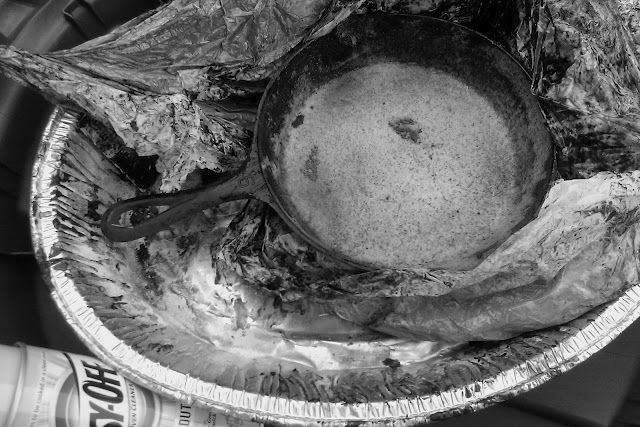
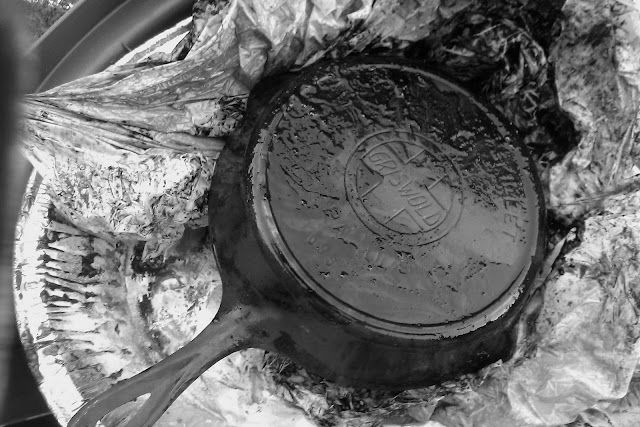
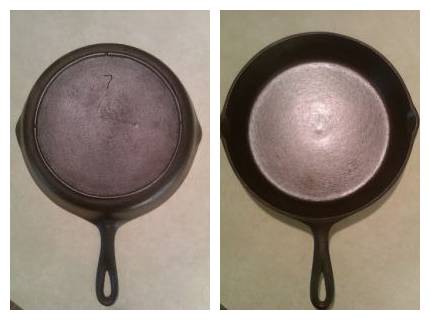
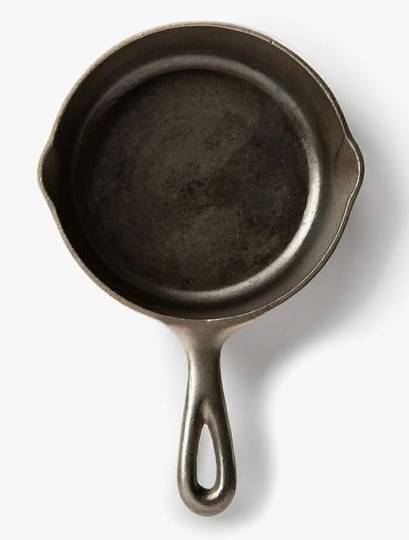
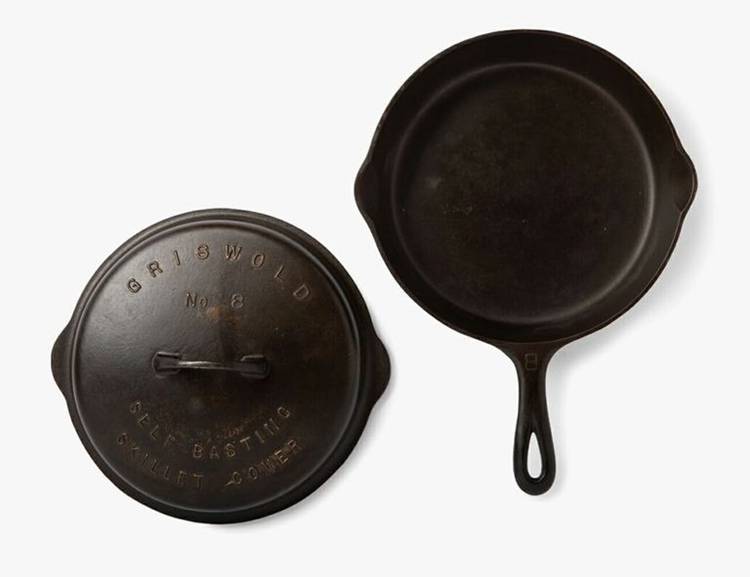




![Where To Sell Antique Furniture In 2022 [Ultimate Guide]](https://www.jacquelinestallone.com/wp-content/uploads/2022/09/Etsy-Your-Place-To-Buy-And-Sell-All-Things-Handmade-600x450.jpg)


